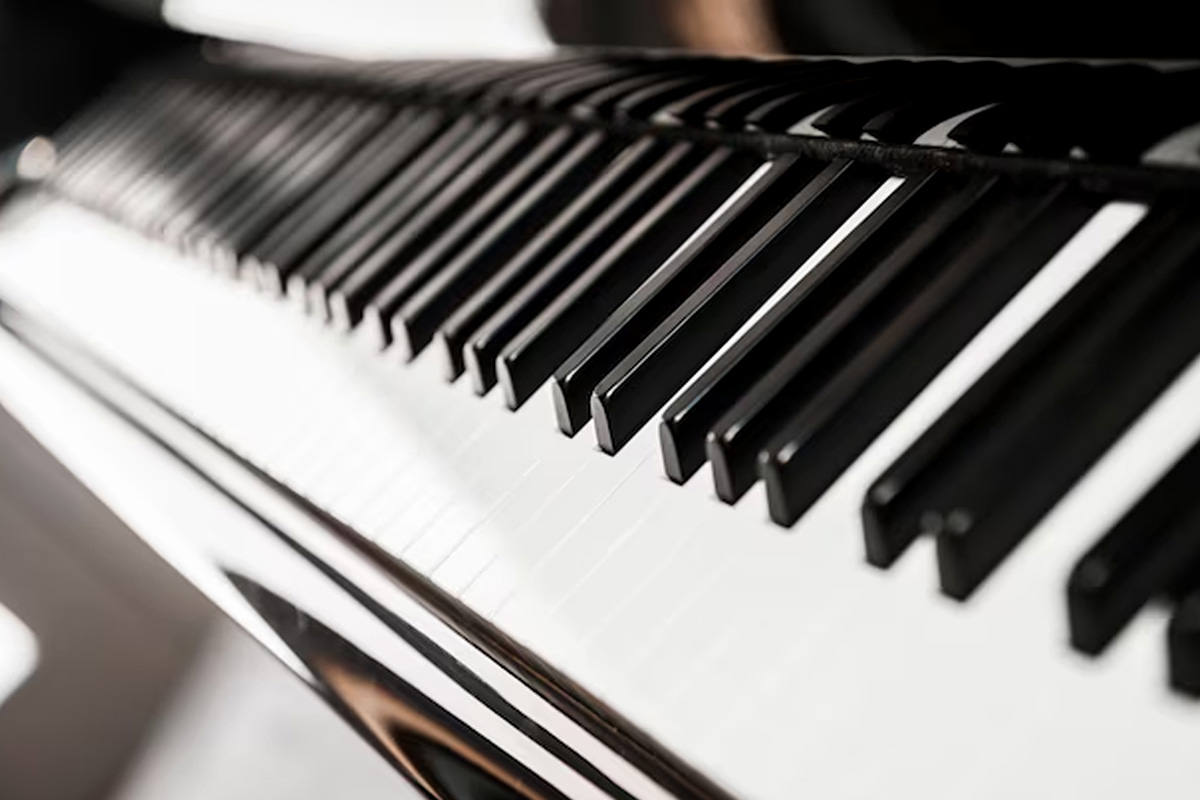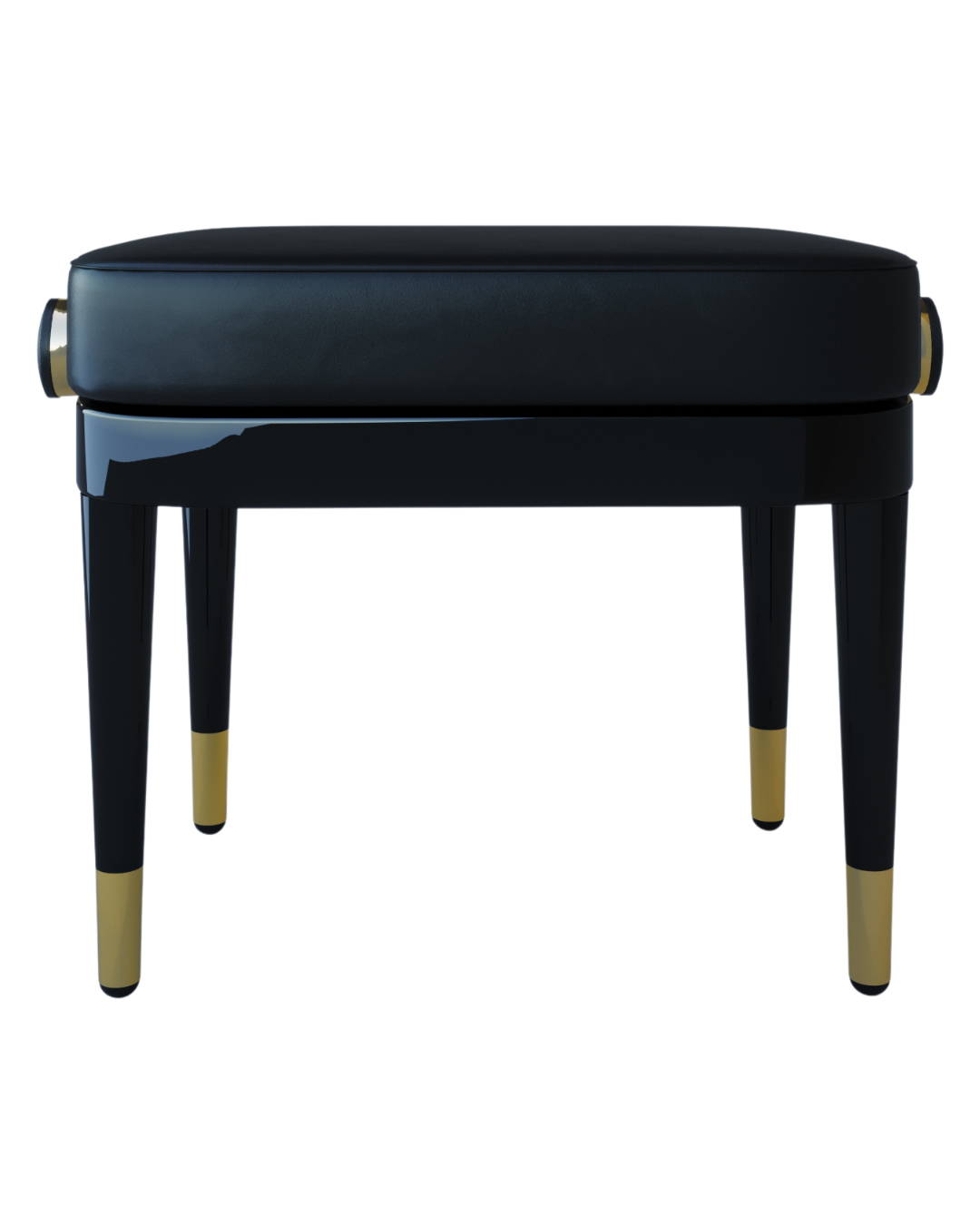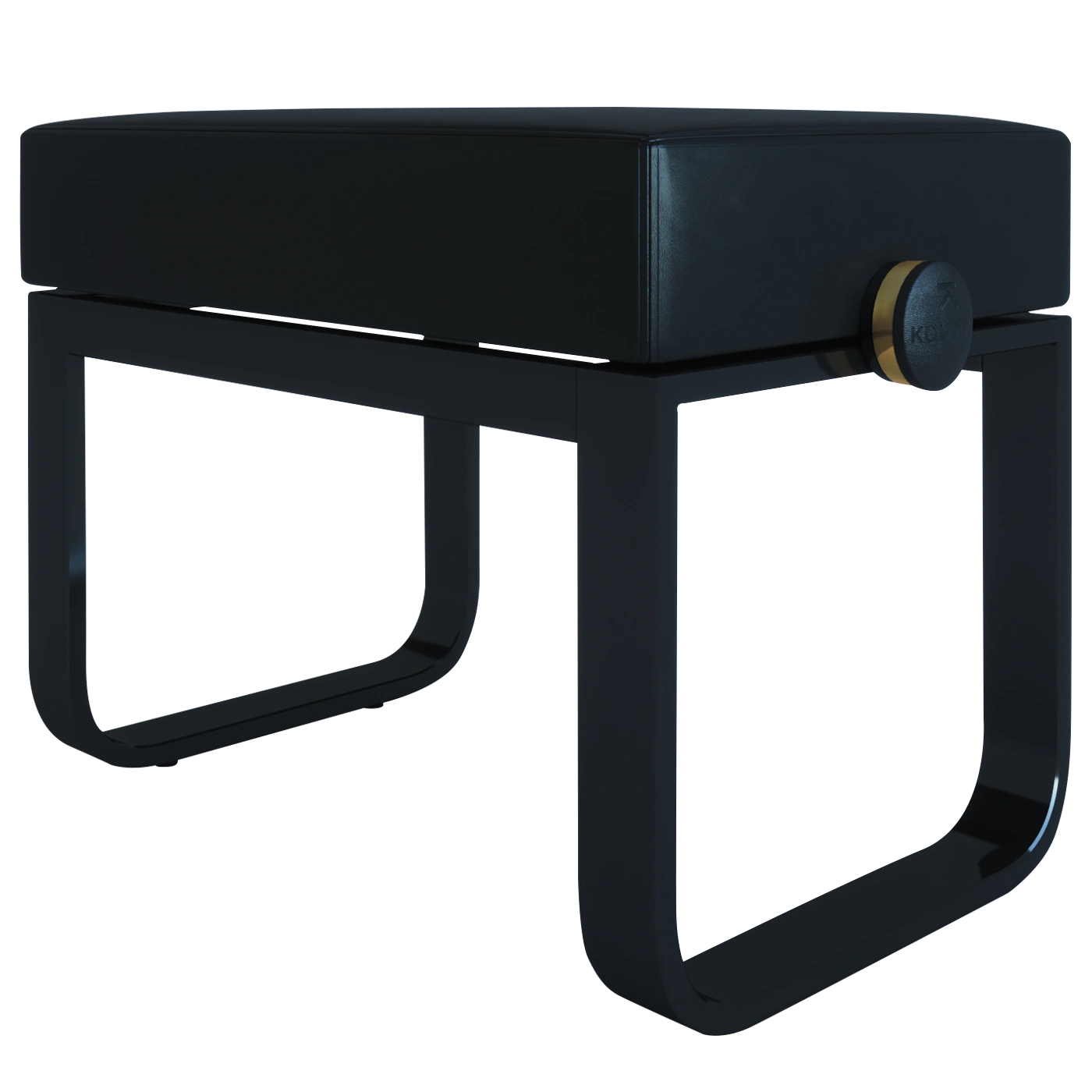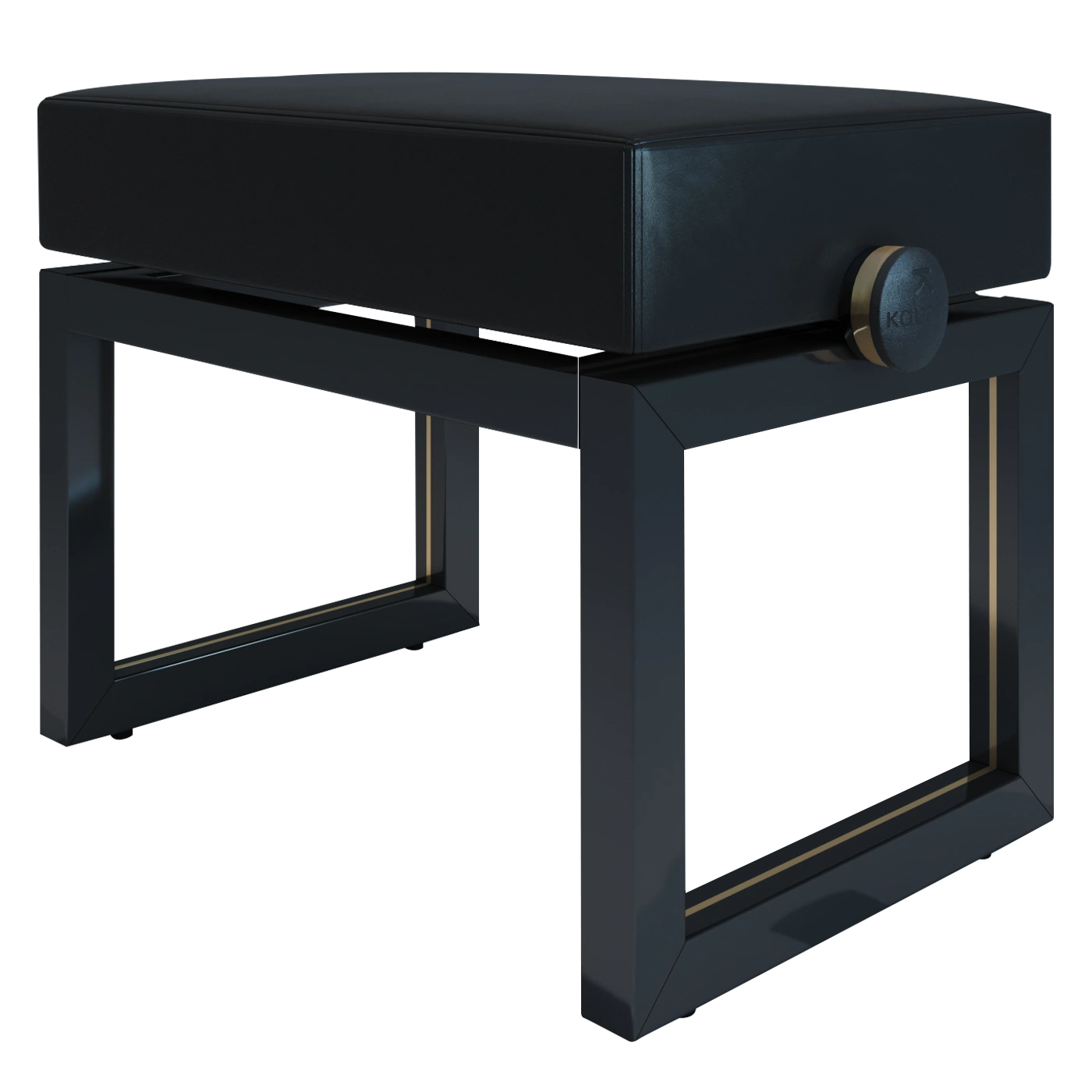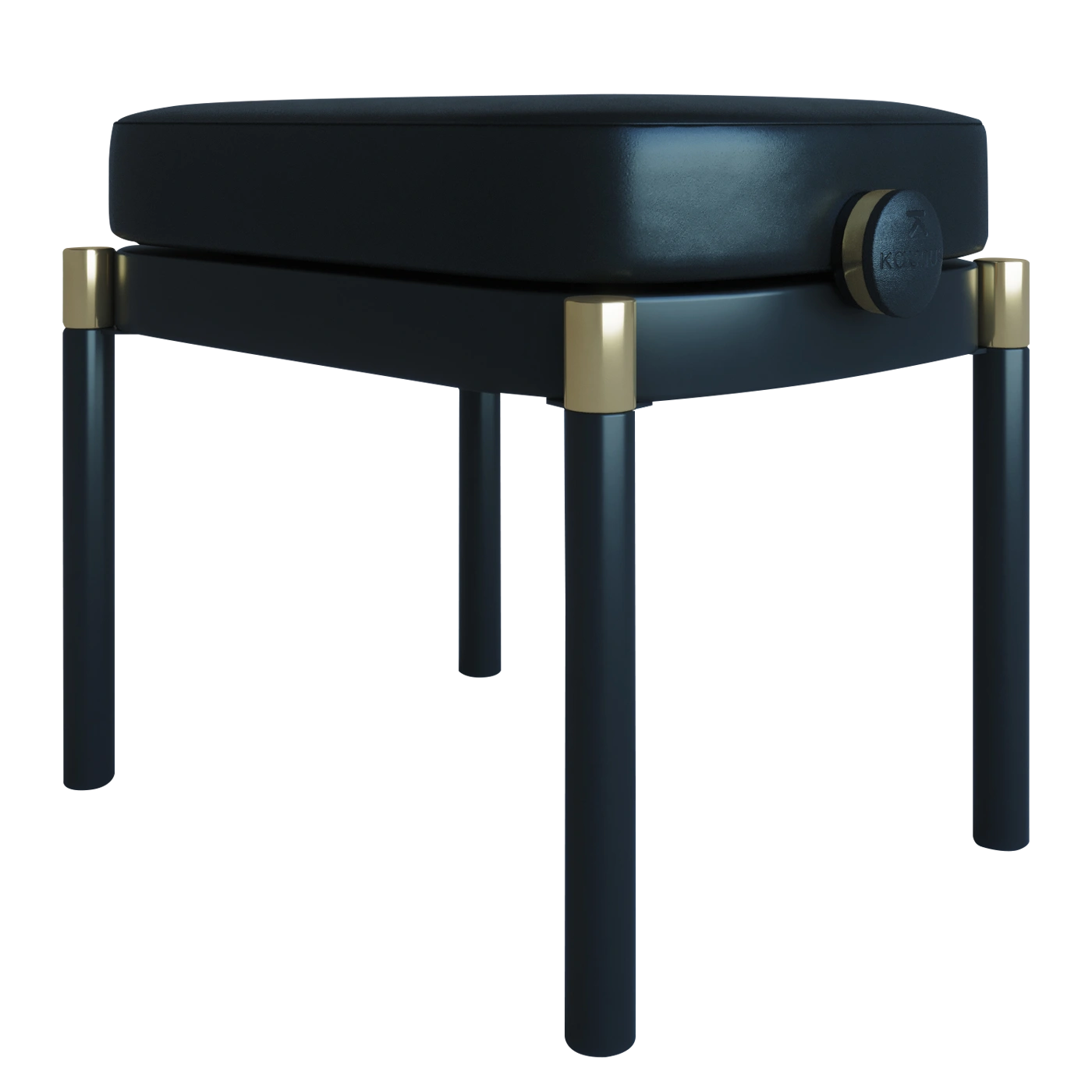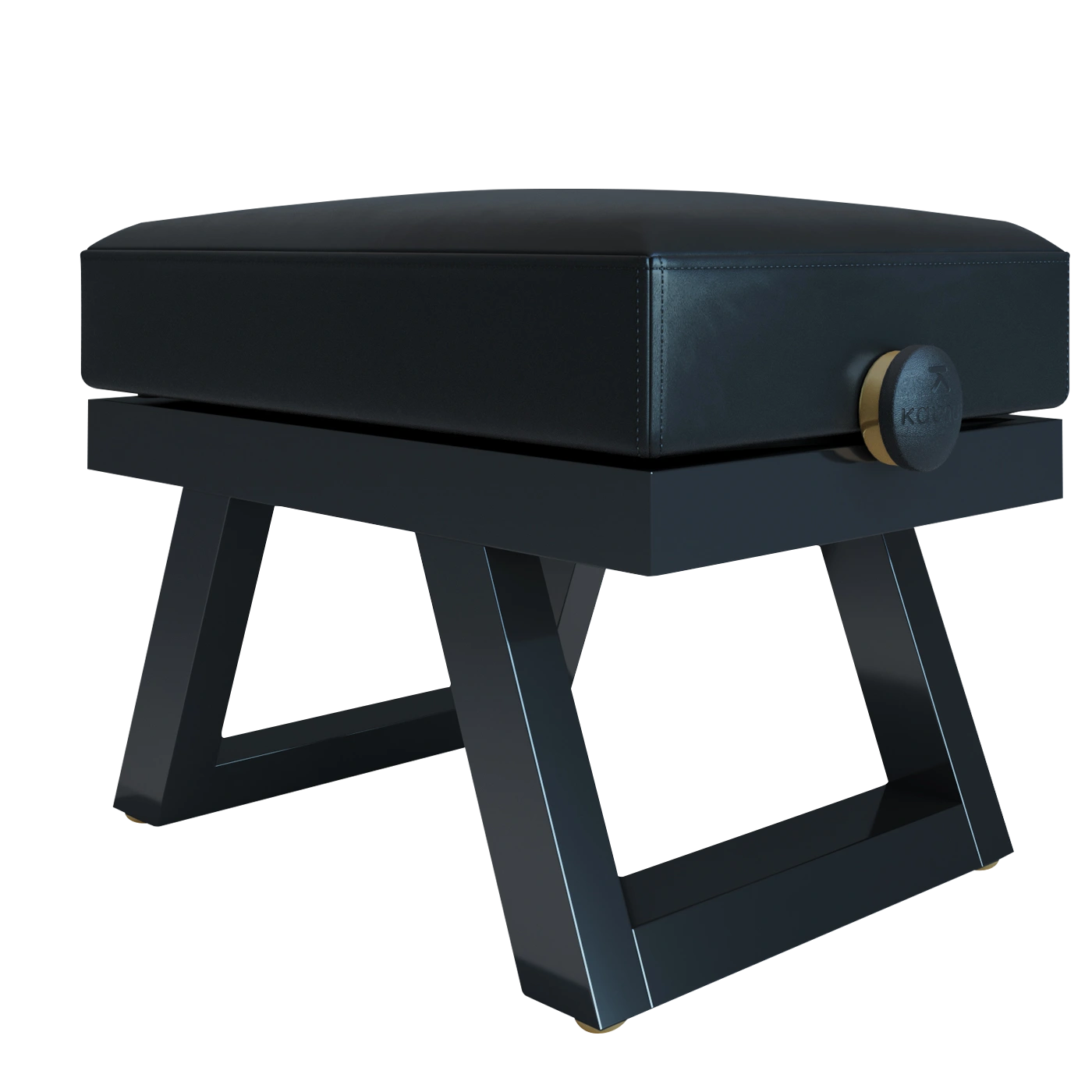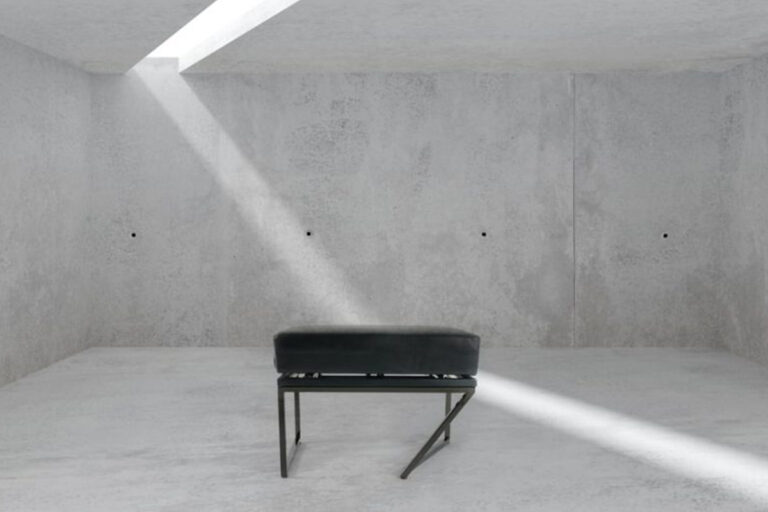An essential factor when playing an instrument is feeling comfortable and safe. The desire and time you spend playing will depend on this, therefore the choice of the bench to play your piano is as important as the choice of the instrument itself.
Pianos usually offer some form of customization, whether with the finish of their metal elements (pedals, hinges), with the shape of the legs, the music stands, or even the color and finish of the furniture but:
What about the only element outside the furniture that ALWAYS ACCOMPANIES THE PIANO?
What requirements must your piano’s faithful companion meet to form a perfect tandem?
In this guide we will help you assess which is the best bench based on your needs.
There are 3 minimum requirements for any piano bench. It must be:
Stable: robust and have levellers on its legs which, in addition to protecting delicate surfaces such as wood, carpets or other types of floor covering, allow it to overcome uneven surfaces, especially on the boards of a stage. It is important to check the maximum weight they can support in each case.
Silent: there must be no tolerances in its assembly that cause clacking or unexpected noises that distract during practice.
Adjustable in height: The correct posture of the musician is a key factor in his performance.
The possibility of adjusting the height of the seat offers the musician the ideal distance and angle with respect to the keyboard and pedals, to avoid ailments derived from an incorrect posture, as well as for the impeccable development of the interpretative technique.
Once these 3 requirements have been met, we will consider the AESTHETIC, ERGONOMIC AND USEFUL LIFE criteria that result from the analysis of the 3 parts of a stool for the correct choice.
STRUCTURE/LEGS. Material and finishes used in its manufacture
WOOD
Beech wood. The most commonly used because it is the best option for turning, bending, dyeing and varnishing. We must carefully check its assembly since stability and noise problems may arise over time. You can choose the shape of the legs and the color according to your piano.
Other noble or precious woods: they are very stable, resistant and have beautiful colors and grains. Rosewood stands out in the manufacture of seats in high decoration due to its hardness and the beautiful contrast of its grain. Its price is proportional to its beauty and quality.
METAL
Made of iron and finished with polyester powder or liquid paint, generally white or black like most pianos. They usually have 2 legs in the shape of an inverted T or a central one in some cases. They are stools that stand out for their price and functionality rather than for their aesthetics.
Made of stainless steel and with a metallic coating of chrome, nickel and gold in keeping with the metallic elements of the piano such as hinges and pedals. These are very durable finishes used in jewellery and high-end decoration pieces for their elegance and exclusivity. KAUNUS stools are unique in the market, among others, for using chrome, black nickel and gold plated stainless steel in their structures.
HEIGHT ADJUSTMENT MECHANISM
Manual: the classic adjustment mechanism in most stools. With a wide range of qualities, it is important to check the thickness and the way in which the X and the central spindle are assembled, since the following will depend on them: the resistance offered when adjusting the height, the stability against movements and the noise caused by metal friction.
With gas/hydraulic spring: Increasingly present in mid-high level stools. They allow for simple, smooth and precise height adjustment (like the well-known office chairs) and are the perfect option when shared by several users, as is the case in conservatories, auditoriums and homes with more than one musician. They are silent and play-free mechanisms and some incorporate a height display to know at all times the exact position chosen by each musician. This is the case of the KHAS (Kaunus Height Adjustment System) developed by Kaunus.
SEAT.
In the case of height-adjustable seats, we will look at the following characteristics to assess this part of the bench.
Firmness: Depending on the density and thickness of the foam used. Low-thickness foams provide a firmer seat than high-density foams (40 Kg/m3) and thicknesses of 4 or 5 cm, which, while providing firmness, are more comfortable to sit on.
With extra storage: these are usually offered in benches with manual height adjustment mechanisms. They offer a storage space for sheet music under the folding seat.
Ergonomic: They use foams cut into a wedge, which gives them a slight incline that helps keep the back straight and reduces pressure on the back.
Upholstery: this is an aesthetic and also an economic issue. The most popular fabrics used are microfibres and faux leather, also called eco-leather, which imitate leather, but if we want an extra touch of aesthetics, comfort and useful life of the upholstery, we must resort to the use of vegetable fibres (cotton velvet) or animal fibres (leather) which will give the final touch of elegance to your stool.
You now have the tools to choose the stool that best suits you, on which you will enjoy the excessive emotions that music provokes, with which you will travel to your deepest feelings.
Now is the time to also choose the one that will be your piano’s faithful companion, the one that will enhance its beauty and form A PERFECT TANDEM with it.


